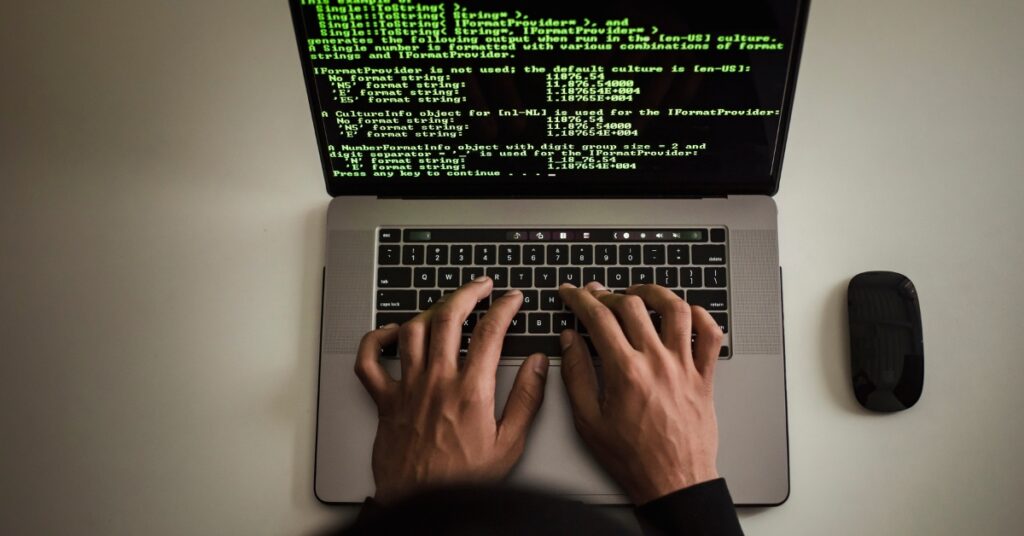By: Michael McQueen
Cybercrime is no longer a niche issue. It has grown into a staggering $9.5 trillion economy, making it the third-largest in the world, trailing only behind the United States and China.
Every 11 seconds, a cyberattack occurs, whether through hacking, scams, or ransomware, impacting both businesses and individuals. With technology advancing at breakneck speed, cybercriminals are getting smarter, using artificial intelligence to make scams more convincing and harder to detect. The challenge we face is not just about preventing cybercrime but staying ahead of it.
Businesses and individuals alike are feeling the impact. Last year, nearly 60% of companies fell victim to ransomware attacks, resulting in millions of dollars lost in stolen data and recovery costs. Meanwhile, online fraud is surging, with consumers losing $8.7 billion in the U.S. alone, marking a 14.5% increase from the previous year. These numbers only scratch the surface of an evolving crisis where AI-driven cyber threats are making traditional security measures outdated.
The Evolution of Scams in the Digital Age
As cybercrime evolves, so do the tactics used by criminals. Gone are the days of easily identifiable scam emails riddled with typos. Today’s scams are polished, hyper-personalized, and alarmingly sophisticated, often fuelled by artificial intelligence. Deepfake scams have increased by 700% in the financial sector, with scammers using AI-generated voice clones and realistic video fakes to impersonate CEOs, colleagues, and even family members. Imagine receiving a call from your boss asking for an urgent wire transfer – only it’s not them on the other end of the line.
Phishing scams have also taken a more insidious turn. AI allows scammers to mimic human behaviour, creating emails that sound personal, natural, and tailored to the recipient. They no longer rely on mass email blasts; instead, they invest time building trust over weeks or even months before striking. Another growing threat is QR code fraud, where criminals replace legitimate QR codes with fake ones, directing unsuspecting users to fraudulent websites designed to steal personal data.
This shift in cybercrime means that criminals no longer need to hack into systems. They just need to trick people into willingly giving up their information. In an era where trust is currency, cybercriminals are exploiting human psychology rather than just technical vulnerabilities.
Building Cyber Resilience: Preparing for the Inevitable
With cyber threats becoming more advanced, the focus is no longer just on preventing attacks but on building resilience – the ability to recover quickly when an attack happens. The most secure businesses and individuals take a proactive approach by backing up critical data, detecting threats early, and responding swiftly.
On average, it takes companies 73 days to contain a data breach. That’s more than two months where sensitive information remains exposed, creating opportunities for financial and reputational damage. The reality is that no system is completely secure, which is why preparation is key. Cyber resilience is about being ready, not reactive, ensuring that even if an attack occurs, it doesn’t result in catastrophe.
Practical Steps to Stay Safe Online
Cybercriminals thrive on exploiting weaknesses, and more often than not, their easiest targets are people who fail to take basic precautions. Fortunately, small yet strategic changes can make a big difference in staying protected. Using a password manager like 1Password or Dashlane to create and store complex passwords significantly reduces the risk of account breaches. Avoid reusing PINs, especially common ones like 1234, 1111, or 0000, which are frequently leaked in data breaches.
Another smart precaution is to set up a personal or family codeword for verifying calls or messages that claim to be from loved ones. Scammers often exploit emotions, sending messages that create urgency or panic. Pausing before responding can prevent costly mistakes. Governments are beginning to crack down on cybercrime, with new regulations imposing $50 million fines on companies that fail to protect consumer data. However, personal vigilance remains the best defence against digital fraud.
The Future of Cybersecurity: AI as a Weapon and a Shield
Artificial intelligence is reshaping the battlefield of cybersecurity. On one hand, AI is being weaponized by cybercriminals to automate attacks, create ultra-realistic deepfake scams, and bypass traditional security measures. On Black Friday alone, Visa and Mastercard reported a 200% increase in AI-driven fraud attempts, highlighting just how rapidly these threats are escalating.
At the same time, AI is also being used to strengthen cybersecurity defences. The rise of biometric authentication such as face scans, fingerprints, and even heartbeat recognition is paving the way for a password-free future. While biometrics may offer a more secure alternative to traditional passwords, it also raises concerns about privacy and data security. Are we willing to trade biometric data for convenience, and what happens if that data is compromised?
Meanwhile, industries once thought to be low-risk are now prime targets for cyberattacks. In 2024, a single cyberattack on the UK’s National Health Service delayed over 1,000 surgeries, proving that the consequences of cybercrime go far beyond financial losses. Critical infrastructure, from hospitals to airlines, is now in the crosshairs of cybercriminals, forcing organizations to rethink security at every level.
The Key to Outsmarting Cybercriminals
Cybercrime is evolving fast, but staying safe doesn’t require technical expertise – it requires awareness, adaptability, and action. Questioning unexpected requests, verifying sources, and maintaining strong digital hygiene can prevent most cyber threats from succeeding.
The internet isn’t getting any safer, but by staying informed and taking cybersecurity seriously, we can protect ourselves, our businesses, and our personal data. Cybercriminals are getting smarter so now it’s time for all of us to do the same.
Article supplied with thanks to Michael McQueen.
About the Author: Michael is a trends forecaster, business strategist and award-winning conference speaker. His most recent book Mindstuck explores the psychology of stubbornness and how to change minds – including your own.
Feature image: Canva





